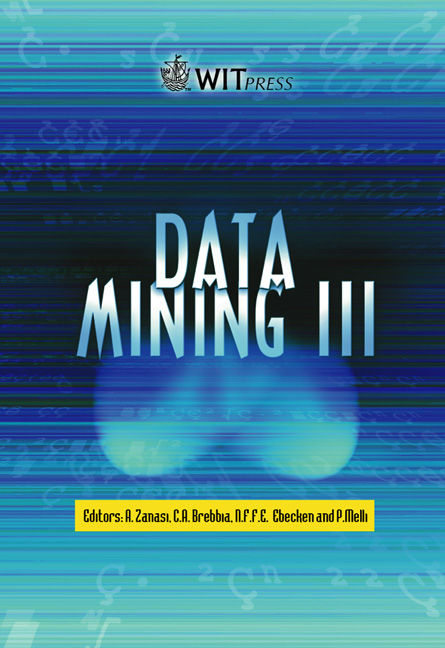A Method For Knowledge Representation And Discovery Based On Composing And Manipulating Logical Equations
Price
Free (open access)
Volume
28
Pages
Published
2002
Size
568 kb
Paper DOI
10.2495/DATA020031
Copyright
WIT Press
Author(s)
D E Sitnikov, B D’Cruz & P E Sitnikova
Abstract
When information about objects and processes is formalised in knowledge bases, there is often the need to deal with features that have discrete values, for example gender (male/female) or marital status (married/single/divorced). When the mutual influence of discrete features is investigated, it is important to find out how closely the variables representing these features are connected and how strongly they influence each other. It is also important to obtain analytical dependencies in the data. This paper focuses on the logical correlation in knowledge bases, and suggests a method for knowledge representation and discovery of dependencies between selected data features. A knowledge base containing links between information features is represented in the form of logical equations with finite predicates. Special classes of equations describing complicated hierarchical data structures are considered. New knowledge about logical links in the data are obtained by eliminating variables from these equations through procedures involving the use of both quantifiers, and the role of each quantifier is discussed. The results of these procedures are dependencies between the features that are easier to interpret than the dependencies represented by the original equations. The elimination procedure does not lead to an increase in the size of the original knowledge base, and there are possibilities for parallel calculations. The knowledge base can be written in a text file with the help of a subset of the extensible mark-up language (XML), which makes it easy to transfer and manipulate the data. Some examples are discussed for the purpose of illustration.
Keywords





